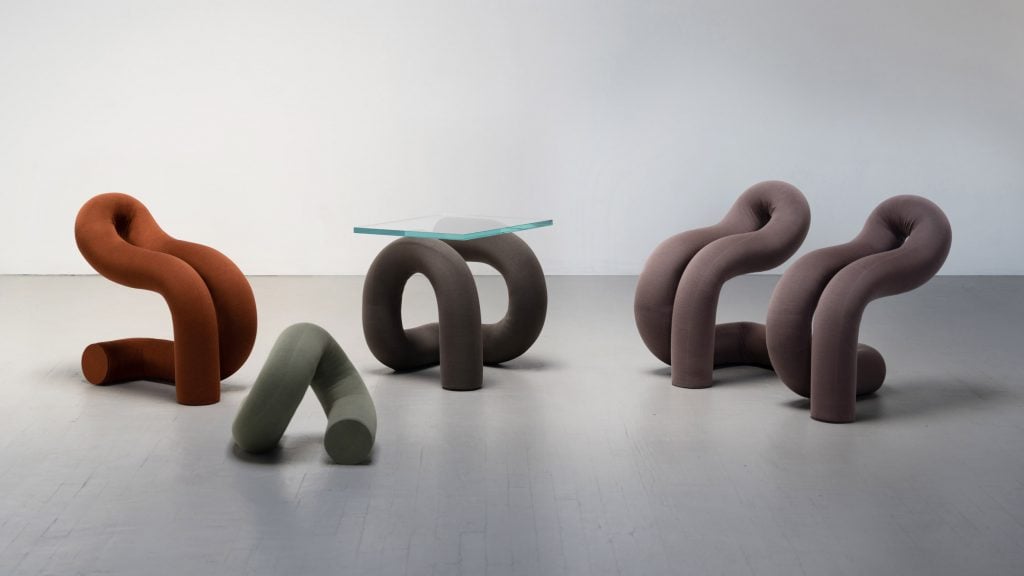[ad_1]
Hong Kong’s West Kowloon Cultural District has announced that construction of the M+ building, a highly anticipated museum designed by Herzog & de Meuron in partnership with TFP Farrells and Arup, is complete.
In addition to revealing that the project gained its Occupation Permit at the end of last year, it was also announced that the waterfront museum—described in a press release as a “new addition to the global arts and cultural landscape and a new international architectural icon”—abutting Victoria Harbour will officially welcome its first guests later this year after a decade-long planning, design, and construction process. The winning design by Herzog & de Meuron and Farrells was first revealed in June 2013 following the announcement of six finalists—Snøhetta, Renzo Piano Building Workshop, and Shigeru Ban with Thomas Chow Architects among them—the previous year. Construction began in 2014.
“This is a major milestone for the museum. As we mark the building completion, our opening preparations are in full swing,” said Suhanya Raffel, museum director at M+, in a statement. “We have moved into our permanent home, and I am thrilled to be able to say we can soon welcome visitors from Hong Kong and beyond to M+.”

The nearly 700,000-square-foot facility will provide a permanent home for M+, the first global museum of contemporary visual culture in Asia, and is set to include three cinemas, multiple gift shops and cafes, a coffee and tea bar, research center, offices, a multimedia library, rooftop garden, and the Learning Hub, a multifaceted area complete with workshops and seminar rooms envisioned as a “space for learning, interpretation, and inspiration set against the backdrop of Victoria Harbour.” Last but not least, the building includes a total of 33 galleries with nearly 183,000-square-feet of exhibition space.
Flanked by the WKCDA Tower, a 16-story building that will house the new head office of the West Kowloon Cultural District Authority along with retail, dining, and entertainment space, and the Conservation and Storage Facility (CSF), the museum building is composed of two monumental concrete volumes clad in green-glazed ceramic tiles. One is an “expansive podium” and the other a “strikingly slender tower” that together reflect “the architects’ reading of the unique typologies of Hong Kong’s architectural landscape and their sensitivity to local urban conditions,” according to a statement. Most of the museum’s galleries will be located on the second floor of the podium level.

Notably, the building sits atop the subterranean MTR Airport Express, a premium-fare express subway route, and the Tung Chung Line, a traditional rapid transit rail line that runs parallel to it. While the existing rail tunnels presented a formidable challenge in the design and construction of the M+ building, excavation work around said tunnels yielded one of the museums’ signature architectural features, Found Space. Supported by five concrete-encased steel “mega-trusses” that lift the building above the tunnels, Found Space anchors the new museum and provides a dramatic backdrop for hosting “dynamic rotating installations.”
In addition to the Found Space, other key architectural features of the museum include the Grand Stair auditorium, a flexible venue for large events and gatherings including lectures and screenings; a lightwell created by cutaways in the floor plates and skylights that connects underground levels with the ground floor and podium level; a roof garden situated atop the podium that offers spacious open-air gathering space and sweeping views of the harbor and Hong Kong cityscape; locally-inspired bamboo furnishings including ticketing desks and benches, found throughout the facility, and, most conspicuously, a fully integrated south tower facade featuring a massive multimedia display screen that acts as a “visual amplification of M+ programmes and accentuates the museum’s connection with the urban landscape facing Victoria Harbour and Hong Kong Island.”

“M+ certainly has the potential to become the major visual culture museum in Asia,” said Jacques Herzog, founding partner of Basel, Switzerland-headquartered Herzog & de Meuron, in a statement. “It best expresses where we should go as a world culture, where diversity, equality, and access to art of all kinds are expressed from the very beginning. This kind of diversity and broadness is part of the DNA of M+. This makes it a museum that is very much locally inspired, but at the same time universal and open; it is for the people and visitors across the world.”
[ad_2]
Source link











